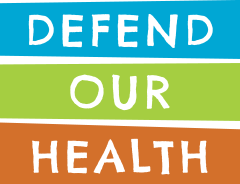Progress for Toxic-Free Food
May 7, 2019 | Uncategorized |
In our home state of Maine this week, LD 1433, the Safe Food Packaging Act, which would phase out toxic PFAS chemicals and phthalates from food packaging, passed the Maine Legislature’s Environment and Natural Resources Committee with a strong bipartisan vote of 9-2.
“Beautiful Maine, the state where my wife and I spent our honeymoon and bring our children to visit, can be a strong leader by limiting PFAS and phthalates in food.”
—Dr. Leo Trasande, M.D., M.P.P.
We are especially grateful to lead sponsor Rep. Jessica Fay and co-sponsor Sen. Robert Foley for their leadership, and thankful to everyone who testified, wrote op-eds, and sent in letters to the editor for their advocacy for the health of Maine kids and families.
The committee vote was the bill’s first hurdle on its path toward becoming law, and now, we want to see the Maine House and Senate be leaders for health and pass the Safe Food Packaging Act. Stay tuned to learn how you can take action to urge your state legislators to pass LD 1433.
An Emotional Public Hearing, and a Flood of Letters
The landslide vote came after an emotional public hearing, in which legislators heard testimony from dairy farmer Fred Stone about his struggle to stay afloat after devastating PFAS contamination of his fields; from parents seeking to protect their children from harmful chemicals in food packaging; from a chef concerned about restaurantgoers’ health; and from health advocates and doctors arguing that Maine can and should lead the nation in protecting children and families from toxic chemicals that can leach into food from packaging.
Following the hearing, Maine newspapers were flooded with letters to the editor from supporters of LD 1433.
Mainers from across the state argued in favor of the bill for the sake of Maine’s restaurants, children, families, and public health both in our state and nationwide.
“My own family was exposed to PFAS-contaminated water for four years in Kennebunk,” said Kate Manahan, LCSW, in the York County Coast Star. “And I can tell you, as a parent, I would much prefer to have a less convenient pizza box than compromise my children’s health by exposing them to needless PFAS and phthalates from food packaging.”
“Maine’s restaurants are a vital part of the state’s economy, and keeping these toxic chemicals out of food packaging where they can contaminate food will bolster confidence in the quality of the food we grow, raise, and serve in Maine,” argued David Levy, owner and head chef at Vinland in downtown Portland, in the Press Herald.
“LD 1433 is a reasonable step toward reducing the health risks from insufficiently tested chemicals with known effects on developmental, endocrine and immune processes,” wrote Dr. Syd Sewall, a practicing pediatrician in Central Maine, in the Bangor Daily News. “While the use of these substances may add some convenience, alternatives can get the job done almost as well. How important is it to have less popcorn stick to the side of the bag?“
“LD 1433 offers a very modest approach to these particular chemicals where research about health effects, contamination of drinking water, bioaccumulation and biopersistence is emerging,” argued Dr. Lani Graham, former director of the Maine Center for Disease Control and member of the Public Health Committee of the Maine Medical Association, in the Press Herald. “Children, pregnant women and the unborn are at highest risk. Why not move forward if we can show that safer substitutions are available?”
“The common-sense approach to protect public health is to ban food packaging that contains any of these chemicals,” wrote Colby College professor Gail Carlson, PhD, in the Bangor Daily News. “History tells us this is the right approach, and there is no better place to enact this restriction than Maine, a national leader in safer chemicals policies.“
Strong Science from a Children’s Health Expert
Committee members’ votes were further informed by a briefing earlier this year from Dr. Leo Trasande, an internationally renowned children’s health expert, on the dangers of these synthetic chemicals.
Dr. Trasande also authored an insightful and persuasive op-ed, published in the Portland Press Herald, in which he described the strong science showing the harms of both PFAS and phthalates.
“Both groups of chemicals can disrupt hormones, the molecules our body uses to signal so many bodily functions,” writes Dr. Trasande, “from body temperature and metabolism to salt, sugar and even sex. PFAS and phthalates are among the synthetic chemicals that scramble those signals and contribute to disease. The evidence has increasingly pointed to these chemicals as a third major factor in the obesity epidemic, even producing weight gain among adults who had successfully dieted their way to lose weight.
“One or both of these groups of chemicals may also contribute to a host of other illnesses and health concerns, including infertility, kidney and testicular cancer, reduced birth weight, asthma and allergies and learning disabilities, and obesity,” Dr. Trasande added.
Looking Ahead
The out-of-state chemical industry continues to oppose LD 1433, and so we need YOU to continue to tell your representative why you want this bill passed. As farmer Fred Stone said: “I’m sure some in the chemical industry may stand up here with new formulas…and think they are safe. But after being ruined by this thing, I’d be pretty damned reluctant to believe any chemical companies.“
“Beautiful Maine, the state where my wife and I spent our honeymoon and bring our children to visit, can be a strong leader by limiting PFAS and phthalates in food,” writes Dr. Trasande. We couldn’t agree more.
If you live in Maine, please be sure you’re staying informed about the upcoming floor votes on LD 1433, so we can keep you up-to-date on the most effective ways for you to take action to help pass this bill.
Thank you for your support of our work to pass this crucial bill—this progress for toxic-free food couldn’t happen without YOU!
